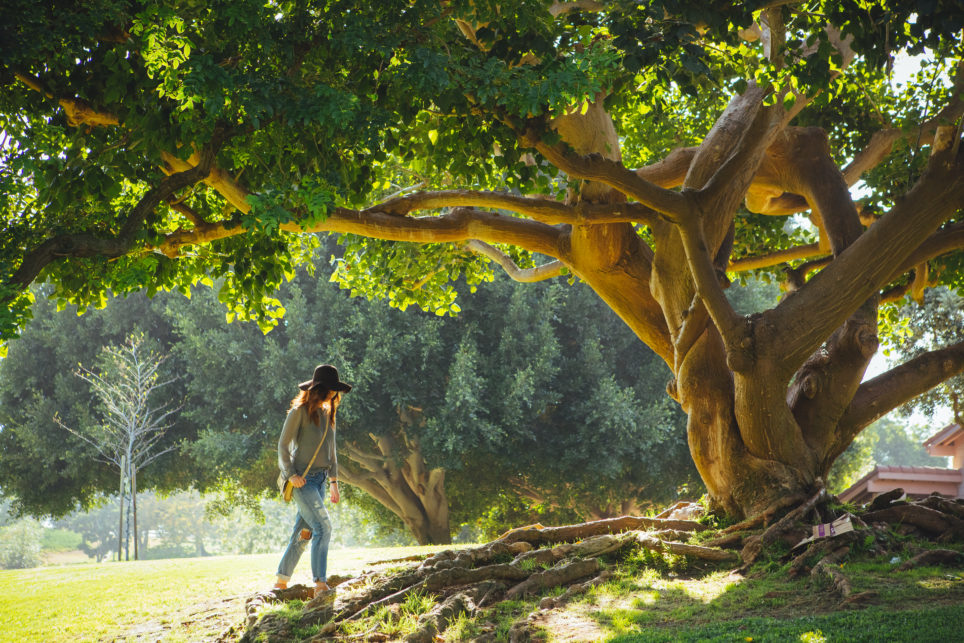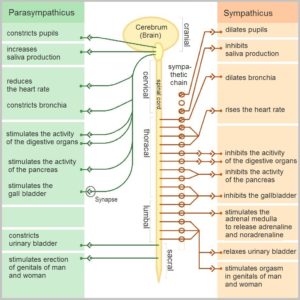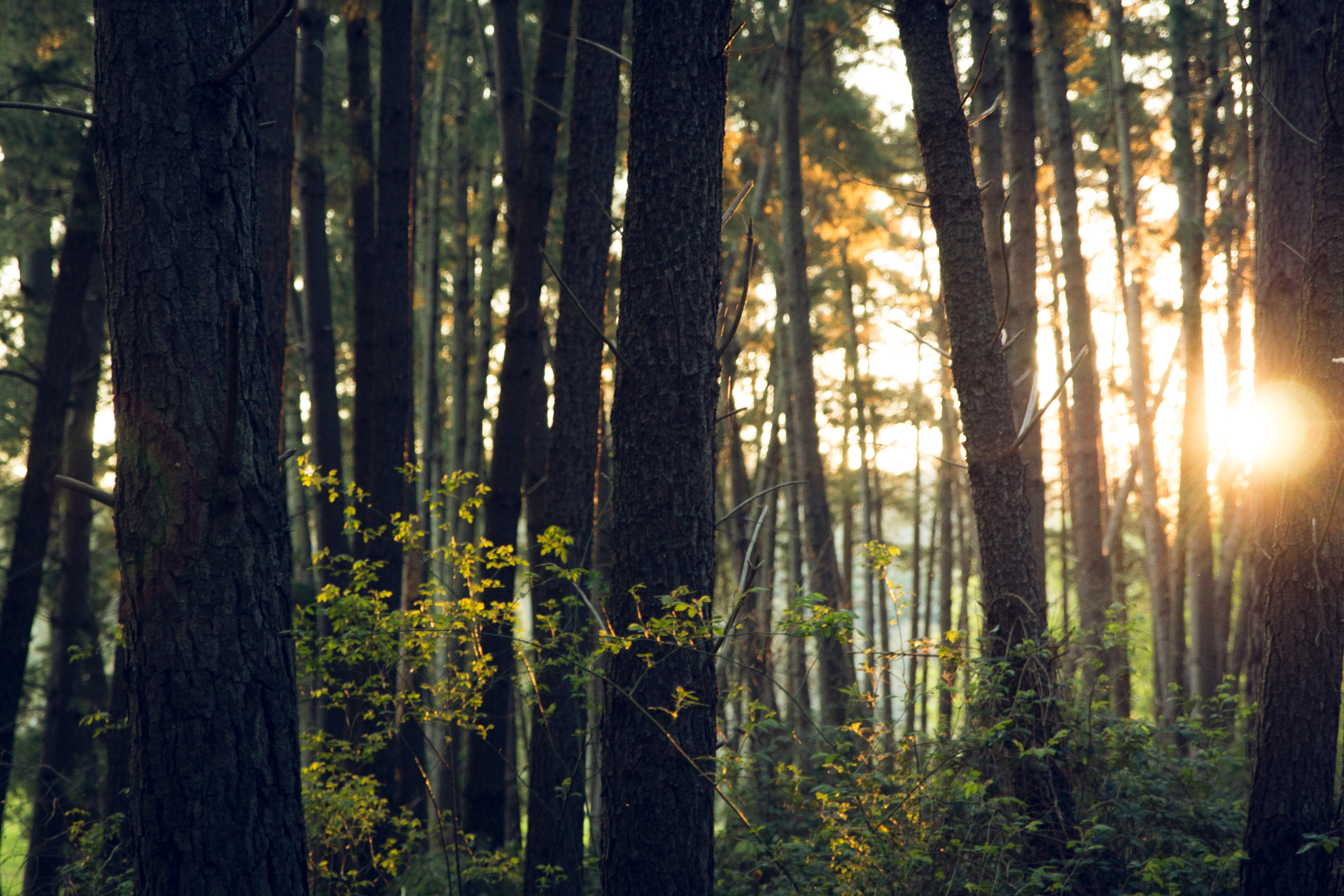By Aylah Clark, ND
Less than 0.01% of our species existence has been in our modern, urbanized surroundings. (1) Throughout the 99.99% of our species’ time before this urbanization, we had many more interactions with nature and subsequent adaptations of our immune system, genetic expression, microbiota ecosystem, and stress response. Our bodies respond to airborne plant compounds and work in symbiosis with microorganisms. Our gastrointestinal tract is a dynamic setting for immune processes, metabolism, and genetic expression and is the location of significant interactions with the outside environment. Even our DNA communicates with that of microbes here. These interactions help modulate our immune system and influence many aspects of human physiology.
We have also reduced our interactions with plant chemicals released into the air that are lacking in most modern indoor environments. Most people today have very different relationships with nature and this likely results in many implications on human health.
“Extricate yourself from the web of life in which you evolved, and the immune system loses its bearing.” – Moises Velasquez-Manoff, An Epidemic of Absence
We are only beginning to truly appreciate the influences of these interactions on health and the possible impacts our separation from the natural world may have. As research continues to support these influences on nature and health, a field of study called Forest Medicine has evolved with an increase in research in therapies such as shinrin-yoku.
Shinrin-yoku is Japanese for “forest bathing,” or visiting a forest. This term has gotten press in recent years due to studies showing that spending more time in nature may indeed have several interesting health benefits. Spending more time among trees seems to boost immune function, ease anxiety, improve cardiovascular parameters, and even influence hormones. How is this possible?
Stress and Anxiety
In one study individuals who walked through the forest had lower cortisol (known as the “stress hormone”), lower blood pressure, and lower heart rate than after walking through the city. These forest bathers also had more parasympathetic activity, which is the part of your nervous system with “rest and digest” responsibilities, and lower sympathetic “fight or flight” activity. (2)
Another study performed in Japan studied 19 middle-aged male participants. They each walked in a park and an urban area for 80 minutes each on a Saturday morning. After walking in the park pulse rate was lower and scores for depression, fatigue, anxiety, and confusion were all lower in the forest walking group. (3)
These affects are at least in part due to a decrease in dopamine, (3) a neurotransmitter often associated with feelings of anxiety, and decreases in adrenaline and norepinephrine, both of which are involved in the stress response. (4)
These relaxation benefits are at least in part set off by olfactory stimulation. This was studied with cypress leaf oil which caused changes such as reduced oxyhemoglobin concentrations in the prefrontal cortex and increased parasympathetic nervous system activity that result in a feeling of relaxation. (5) Volatile organic compounds emitted from Japanese cedar (Cryptomeria japonica) also showed to cause increased relaxation through lower blood pressure and a calming effect on prefrontal cortex activity. (6) (7)
Many studies showed that even as little as a 15 minute walk in nature could induce these relaxation changes and if you live in an urban area not close to parks, rooftop gardens may do the trick as well. (8) Interestingly, some of the benefits of simply viewing plants (increased oxyhemoglobin in the prefrontal cortex) was true only for viewing actual foliage and not true for viewing images of these plants. (9)
Cardiovascular Benefits
It’s worth mentioning specifically the effect forest bathing has on blood pressure. “Normal” blood pressure is considered 120/80, though this varies for age. A small study on 9 hypertensive males showed a drop from the control value of 140.1 mmHg to 123.9 mmHg systolic blood pressure. Diastolic blood pressure dropped from 84.4 mmHg to 76.6 mmHg. (10) Similar results have been shown in other studies as well. (11)
This decrease in blood pressure is in part due to the effects of specific constituents of trees/wood materials, limonene and alpha-pinene. Inhaling these substances showed to decrease systolic blood pressure, (6) and limonene was shown to increase parasympathetic activity and decrease heart rate. (12)
Immune Function
Spending time in the forest can enhance the number of and activity of an immune cell called an NK cell (Natural Killer cell) as well as increase intracellular anti-cancer proteins in other immune cells called lymphocytes. Natural Killer cells play major roles in rejecting tumors and virus-infected cells. These immune changes lasted anywhere from 7 -30 days after the individuals spent time in the forest.
Interestingly, indoor studies were performed where subjects were given olfactory stimuli from a coniferous tree common in Japan known as Hinoki cypress or Chamaecyparis obtusa. NK cell activity increased with this olfactory stimulus alone as well. (13) This is due primarily due to constituents known as phytoncides.
Phytoncides appear to be a major player in these immune changes. Phytoncides are a group of antimicrobial volatile organic compounds released from plants to help defend the plant. For example, oak has a phytoncide called greenery alcohol, garlic contains allicilin, and pine has alpha-pinene to name a few.
Blood Sugar
Forest walking may even have positive effects on blood sugar. For 87 non-insulin dependent diabetic patients blood glucose levels declined after walking in the forest. (14)
Hormonal Effects
A small study with 16 male subjects showed an increase in adiponectin, a protein hormone that is higher in leaner people, and you can read more about here. The same study showed an increase in DHEA-s which is a hormone precursor often associated with a general sense of well-being. (4)
Attention & Focus
Modern urban environments may be detrimental to our ability to direct and establish attention. From a study in Psychological Science, “Nature, which is filled with intriguing stimuli, modestly grabs attention in a bottom-up fashion, allowing top-down directed-attention abilities a chance to replenish. Unlike natural environments, urban environments are filled with stimulation that captures attention dramatically and additionally requires directed attention (e.g., to avoid being hit by a car), making them less restorative.” (15)
Forest Medicine & Preventive Medicine
Forest Medicine, and other forms of nature therapy including shirin-yoku, present low-cost, simple, and effective options to include in preventative medicine recommendations to help improve quality of life, buffer the negative effects of the stress of modern life, and reconnect with nature. Make the effort to take a walk on your lunch break or after work and take advantage of your local parks when you can.
If you are interested in learning more about the microbial influences on health mentioned in the first few paragraphs, I highly recommend An Epidemic of Absence: A New Way of Understanding Allergies and Autoimmune Disease by Moises Velasquez-Manoff.
Works Cited
- Physiological Effects of Nature Therapy: A Review of the Research in Japan. Song, C, Ikei, H and Miyazaki, Y. 8, s.l. : Int J Environ Res Public Health, 2016, Vol. 13.
- The physiological effects of Shinrin-yoku (taking in the forest atmosphere or forest bathing): evidence from field experiments in 24 forests across Japan. Park, BJ, et al. 1, 2010, Environ Health Prev Med, Vol. 15, pp. 18-26.
- Effects of Forest Bathing on Cardiovascular and Metabolic Parameters in Middle-Aged Males. Li, Q, et al. s.l. : Evid Based Complement Alternat Med, 2016.
- Acute effects of walking in forest environments on cardiovascular and metabolic parameters. Li, Q, et al. 11, s.l. : Eur J Appl Phyysiol, 2011, Vol. 111, pp. 2845-53.
- Physiological effect of olfactory stimulation by Hinoki cypress (Chamaecyparis obtusa) leaf oil. Ikei, H, Xong, C and Miyazaki, Y. s.l. : J Physiol Anthropol, 2015, Vol. 34, p. 44.
- Physiological effects of visual, olfactory, auditory, and tactile factors in the forest environment. Tsunetsugu, Y, BJ, Park and Miyazaki, Y. [ed.] Q Li. s.l. : Nova Science Publishers, Inc, 2012, Forest Medicine, pp. 169-181.
- VOCs emitted from Japanese cedar (Cryptomeria japonica) interior walls induce physiological relaxation. Matsubara, E and Kawai, S. 2014, Build Environ, Vol. 72, pp. 125-130.
- Physiologically relaxing effect of a hospital rooftop forest on older women requiring care. Matsunaga, K, et al. 11, s.l. : J Am Geriatr Soc, 2011, Vol. 59, pp. 2162-3.
- Effect of stimulation by foliagep lant display images on prefrontal cortex activity: a comparison with stimulation using actual foliage plants. Igarashi, M, et al. 1, s.l. : J Neuroimaging, 2015, Vol. 25, pp. 127-130.
- Physiological and psychological effects of forest therapy on middle-age males with high-normal blood pressure. Ochiai, H, et al. s.l. : Int J Environ Res Public Health, 2015, Vol. 12, pp. 2521-2531.
- Physiological and Psychological Effects of a Forest Therapy Program on Middle-Aged Females. Ochiai, H, et al. 12, s.l. : Int J Environ Res Public Health, 2015, Vol. 12, pp. 15222-32.
- Physiological and psychological effects of olfactory stimulation with D-limonene. Joung, D, et al. s.l. : Adv Hort Sci, 2014, Vol. 28, pp. 90-94.
- Effect of phytoncide from trees on human natural killer cell function. Li, Q, et al. 4, s.l. : Int J Immunopathol Pharacol, 2009, Vol. 22, pp. 951-9.
- Shinrin-yoku (forest-air bathing and waking) effectively decreases blood glucose leves in diabetic patients. Ohtsuka, Y, Yabunaka, N and Takayama, S. 3, s.l. : Int J Biometeorol, 1998, Vol. 41, pp. 125-7.
- The Cognitive Benefits of Interacting with Nature. Berman, Marc G., Jonides, John and Kaplan, Stephen. 12, s.l. : Psychological Science, 2008, Vol. 19.






